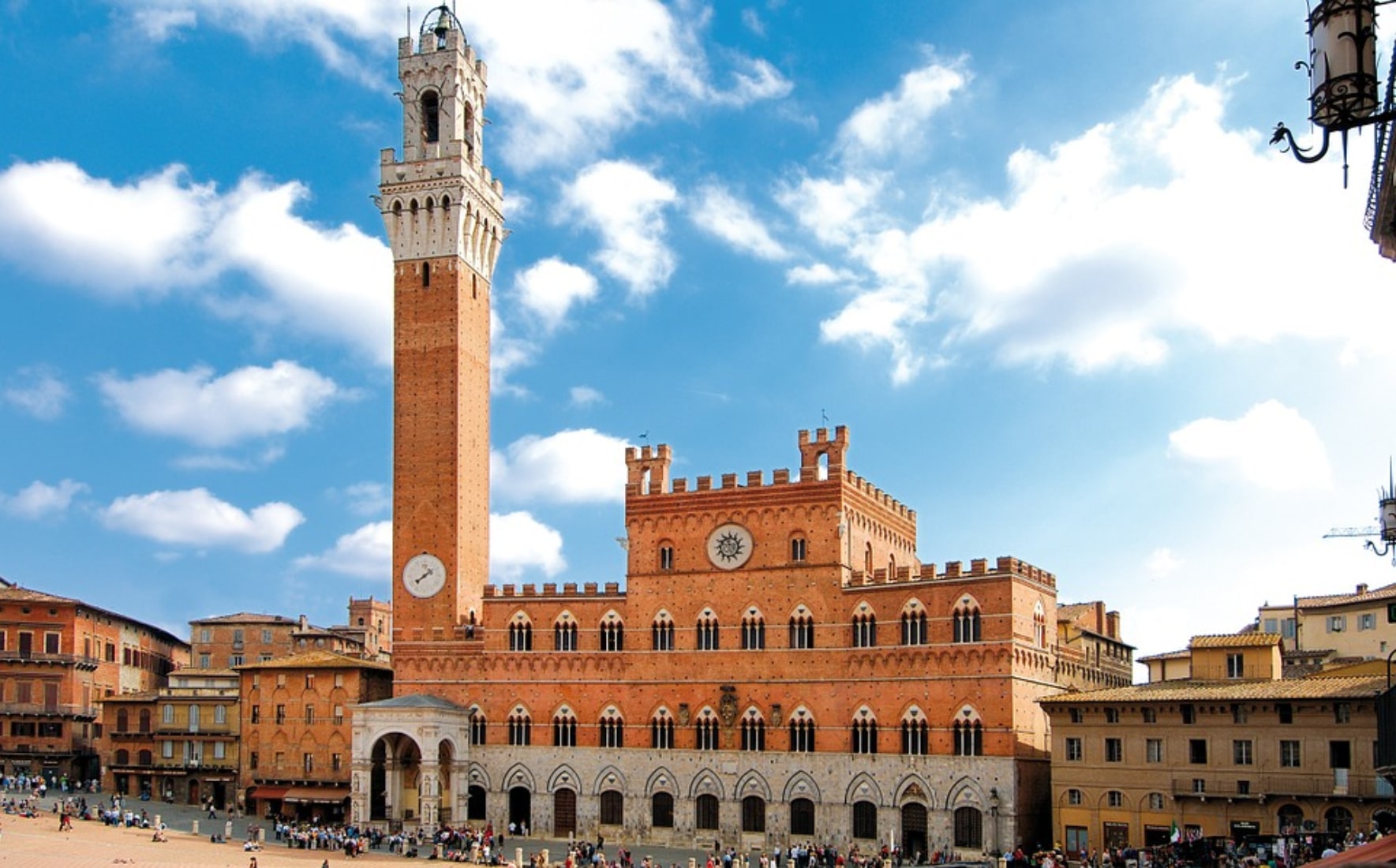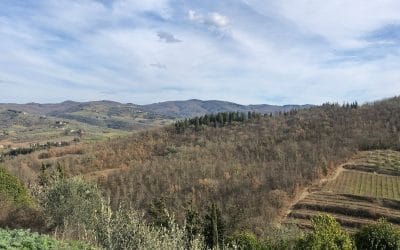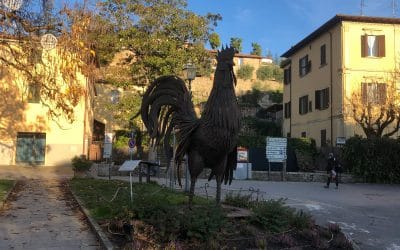Piazza del Campo and surroundings
Perhaps the most evocative medieval urban environment in Italy
Piazza del Campo
Between the thirteenth and fourteenth centuries the city of Siena felt the need to organise a public space of representation for civil power, establishing an organic relationship between the seat of the judiciary and the citizenry. The very particular spatial configuration of the square, which adapts without altering it to the slope of the ground, creating a hemicycle shape in the shape of a shell-valve, was determined at the end of the 12th century by the construction of a wall separating the area of today's Campo from the adjacent area of today's Piazza del Mercato, probably to stem soil erosion. Close to the wall appears the Palazzo Pubblico: the fulcrum of the various visual directions. The Palazzo Pubblico was the first to be built and was then gradually surrounded by private residences belonging to the most important families in Siena. Symbol of the whole city of Siena, Piazza del Campo is the home of the Palio delle Contrade.
Fonte Gaia
There is news of the presence of a fountain in Piazza del Campo from the middle of the 14th century, a period in which the construction of underground canals, still existing today, called "bottini", was completed. They carried water from the surrounding countryside all the way into the city, creating a real network of brick-clad tunnels underground in Siena, a work of considerable artistic and engineering value. In 1409 the Municipality commissioned the renovation of the pre-existing fountain to the great Sienese sculptor Jacopo della Quercia, who finished the work in 1419. Due to the serious deterioration of the original marbles, in the nineteenth century it was decided to replace them with a copy made by Tito Sarrocchi; the remains of the original reliefs are currently kept inside the Hospital of Santa Maria della Scala.
Palazzo Chigi Saracini
Located in Via di Città, Palazzo Chigi Saracini is one of the oldest patrician residences in Siena. Its original nucleus took shape in the twelfth century, when the Ghibelline Marescotti family started the construction of a fortified castle, gradually incorporating surrounding buildings; between the thirteenth and fourteenth centuries the building also served as the seat of the Council of Regents of the Republic of Siena, before it finally moved to the Palazzo Pubblico, then under construction. The exterior of the Palace, completed during the fourteenth century but subject to additions and renovations during the Renaissance and especially at the end of the eighteenth century, is in the typical Sienese Gothic style, covered in stone up to the first floor, opened by three-mullioned windows and finished on one side by a stone-cut tower.
Palazzo Piccolomini or delle Papesse
Palazzo Piccolomini or delle Papesse, together with the other Palazzo Piccolomini in Via dei Banchi di Sotto, is one of the rare examples of Renaissance architecture in a city like Siena, characterised by a mainly Gothic urban fabric.
Loggia della Mercanzia
The Loggia della Mercanzia stands at the so-called Croce del Travaglio, the place where the three main streets of the city meet, from which the development of the urban area originated: Via di Città, Banchi di Sopra and Banchi di Sotto. The loggia stands out not only for its structure but also for its sculptural ornamentation, among the most remarkable of the fifteenth-century Sienese. The loggia and the palace of the same name of which it is part, which has a prospectus overlooking the centre of the Campo, have been home to the Circolo degli Uniti since the eighteenth century, popularly known as the "Casino dei Nobili", a sort of association formed by members of the Sienese nobility, which still today ensures members and their guests a privileged position to watch the Palio race.
Palazzo Piccolomini
Located in Via dei Banchi di Sotto, Palazzo Piccolomini is the most remarkable Renaissance building in Siena. The project is attributed to the Florentine architect Bernardo Gambarelli known as Rossellino.
Logge del Papa
The Pope's Lodges are located at the beginning of Via dei Banchi di Sotto, near the church of San Martino; they were erected by Pope Pius II Piccolomini in 1462 as a tribute to his large family. The Pope's Loggias, together with the large size of the adjacent Palazzo Piccolomini, constitute the most remarkable episode of the Sienese Renaissance, perfectly inserted in the urban fabric according to the highest examples of architectural rationality of the Tuscan 15th century.
Discover Chianti with its castles...
Greve in Chianti
Greve in Chianti A paradise for lovers of greenery The history of Greve in Chianti is strongly connected with the beautiful Castle of Montefioralle, located above the city. This small fortified village is a real jewel, where you will find yourself walking along narrow...
Gaiole in Chianti
Gaiole in Chianti A market town for castles and surrounding areasGaiole in Chianti in the past was a city busy with local traffic, but after the end of the conflicts between Florence and Siena, it turned more towards agriculture, strengthening its position as a market...
Vertine
Vertine Fortified oasis in the Chianti mountains Vertine is one of the best preserved examples of military architecture in Chianti and more precisely in the municipality of Gaiole. The excellent condition in which it is located today, especially the castle with its...




